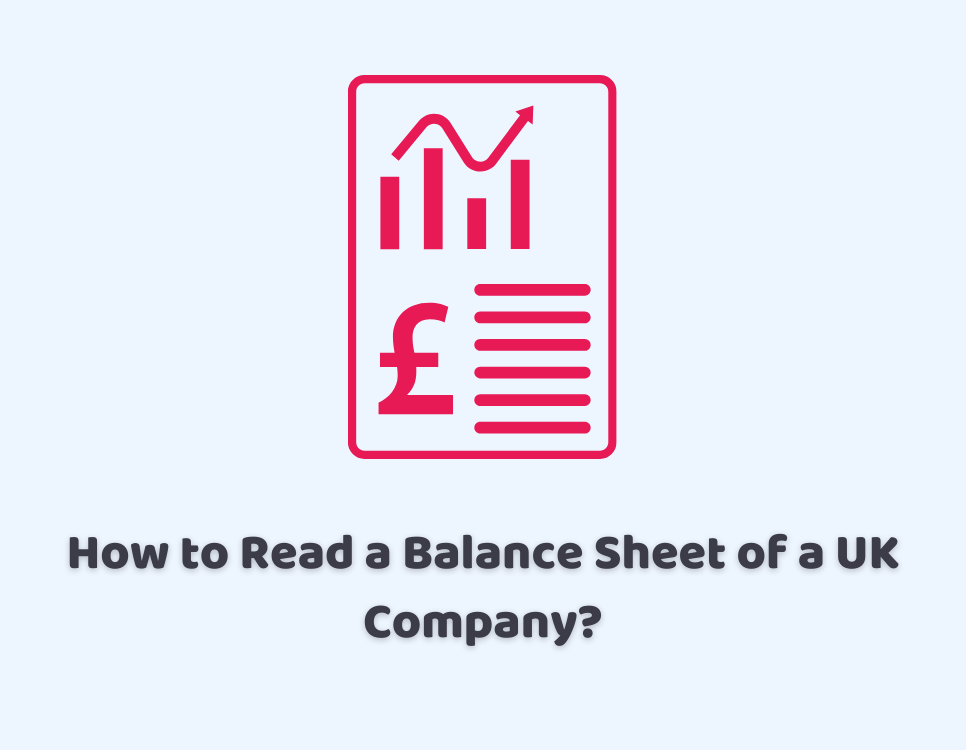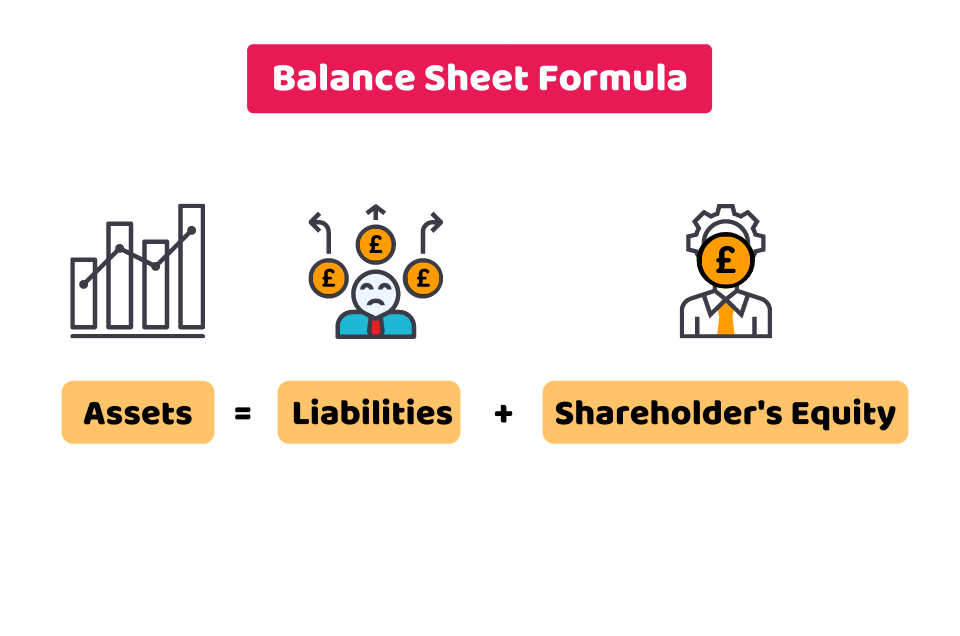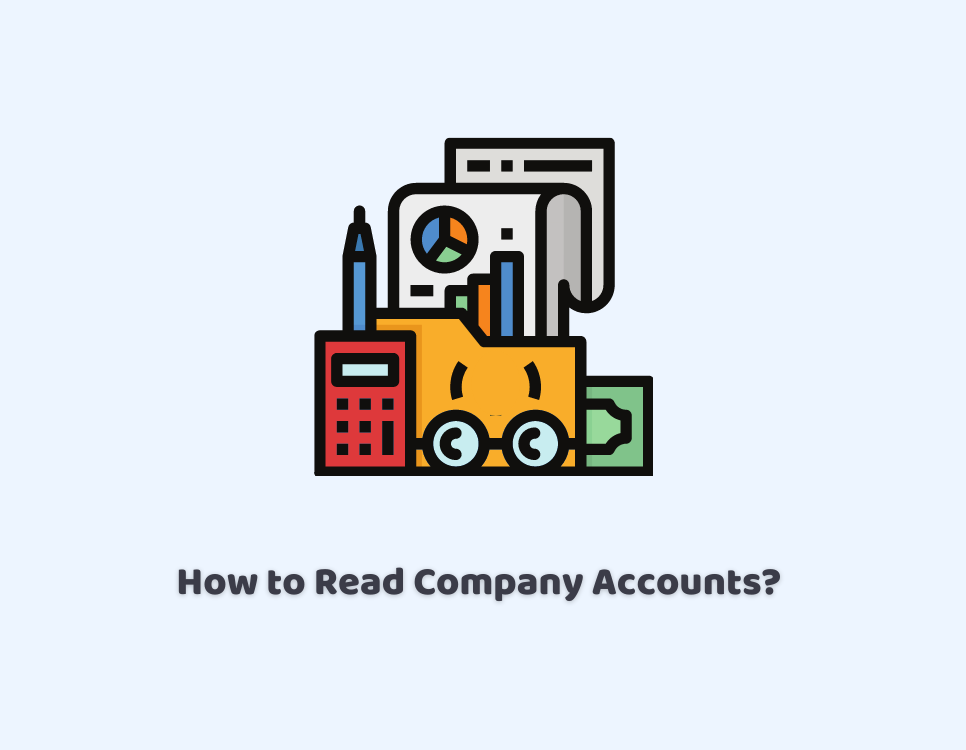
16/08/2021Business , Limited Company , LLP
Whether you’re an investor, business owner or an individual based in the UK- who’s keen to learn about the company’s accounts – you need to know what is a balance sheet? How it will help you to operate your business efficiently? How you can work out the worth of your business through it? To get all answers, you need to know How to Read a Balance Sheet of a UK Company.
Let’s dive in!
Get the help of an accountant to prepare, manage and maintain your accounts properly. Get in touch with us now!
What is a Balance Sheet?
A balance sheet is a document that provides an overview of the financial status of your business in a certain period. It indicates the stability of your business. This sheet shows what a business owns and what is owed at a given period. By analysing a balance sheet and matching it with other financial documents, you can make a realistic estimation of the financial health of your business.
Importance of Balance Sheet
Along with the financial assessment, a balance sheet has a lot of other benefits for your business. It can be a wonderful tool to attract investors. By analysing a balance sheet on a daily basis, you can find out the past, current and future performance of your business.
This document is equally important for investors, stakeholders and lenders. A balance sheet – along with an income statement – can attract people to invest in your business. As investors can review it to know how your business is managing its dues, how it has turned its assets into revenue, how your business is generating returns against its investment and how much leverage your business contains. Contrarily, without this statement, you can’t impress investors and lenders for investments and loans.
How Does a Balance Sheet Work?
A balance sheet serves as a tool to measure the financial health of a business, typically at the end of each quarter. It uses the basic formula of:

Assets = Liabilities + Shareholder’s Equity
You or your accountant will keep track of everything that a business owns, like cash, machinery, etc under the asset section of the balance sheet. In the liabilities section, there’d be a record of what the business owes like taxes, loans. And in the equity, there’d be an account for retained earnings and common stock.
Evident by the name, the total assets of the balance sheet need to be equal to liabilities plus the shareholder’s equity. In case, if this value is not equal, it means there is a mistake in your accounting system or there is a serious cash flow issue that can take the business to insolvency.
In search of accountants for limited companies? We provide a wide range of tailored accounting and taxation services for limited companies in the UK! Contact now!
How to Read Balance Sheet in the UK?
A balance sheet comprises three components: assets, liabilities, and shareholder’s equity. Without the information of these terms, you can’t read a balance sheet. Let’s see what are they and how you can read a balance sheet in the UK using these terms:
Assets
Assets are the things (tangible and intangible) that a company owns. They’re recorded in the first column of the balance sheet. Current assets are those assets that are easily turned into cash within a year or less. These assets would be recorded in the balance sheet as:
- Account receivable: Money that you’re going to receive
- Inventory: Things you sell to get profit
- Marketable securities: Investments that can easily be traded, bought and sold
- Prepaid expenses: Expenses you paid in advance.
Unlike current assets, non-current assets are those assets that can’t be turned into cash within a single year. Tangible assets like building, land, machinery, etc can be called non-current assets. These also include intangible assets like licenses, patents or intellectual property only if they are acquired not developed.
Liabilities
The money that you need to pay to outsiders like suppliers, or creditors is known as liability. Liabilities are recorded in the second column of your balance sheet, after assets. Alike assets liabilities are also current and long-term. Current liabilities are payable within a year and long-term liabilities are those liabilities that can’t be payable with a year like long term debts, bonds, etc.
Shareholder’s Equity
It is also called shareholder’s equity on a balance sheet. It includes two things, the amount invested by the owner or shareholder for the initial startup of a business and includes the money attributed to the business owner after paying liabilities. To put it simply, it is the value left after deducting liabilities from the assets. After liabilities equity will be recorded and it includes:
- Common Stock: It shows a share of ownership in a company
- Preferred Stock: These are preferred shares of a company’s stock. These have priority over common stockholders
- Additional Paid-in Capital: It is the value of the company’s shares above the value at which they’re issued
- Retained Earnings: Net income left after paying dividends to the shareholders.
Quick Sum Up
To sum up, you have got enough information on how to read the balance sheet of a UK company. The balance sheet is important to document as it indicates the financial health of your company against the investments. By analysing a balance sheet you could know how a business is performing or is it worth investing or not. By measuring your company’s performance, you can work on the areas to take your business to the next level.
Need professional help? CruseBurke has a team of accountants and bookkeepers to save your time and hassle of preparing, managing and balancing your statement. Contact us today!
Disclaimer: This blog provides general information on how to read a Balance Sheet of a UK Company.


